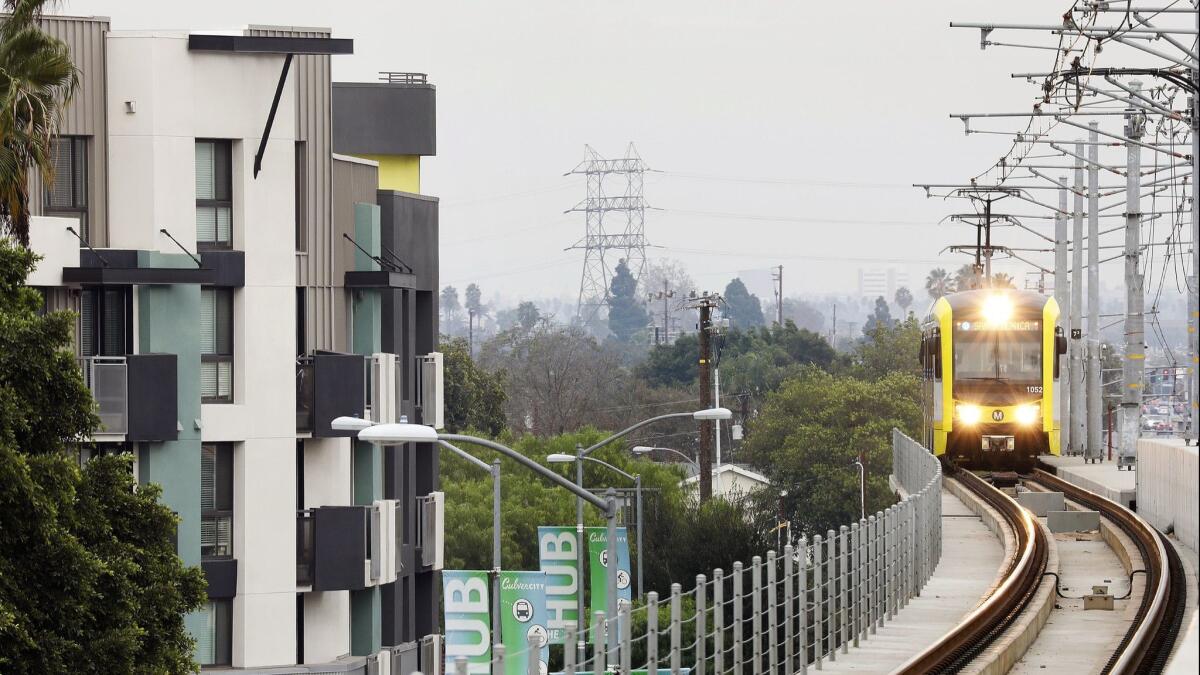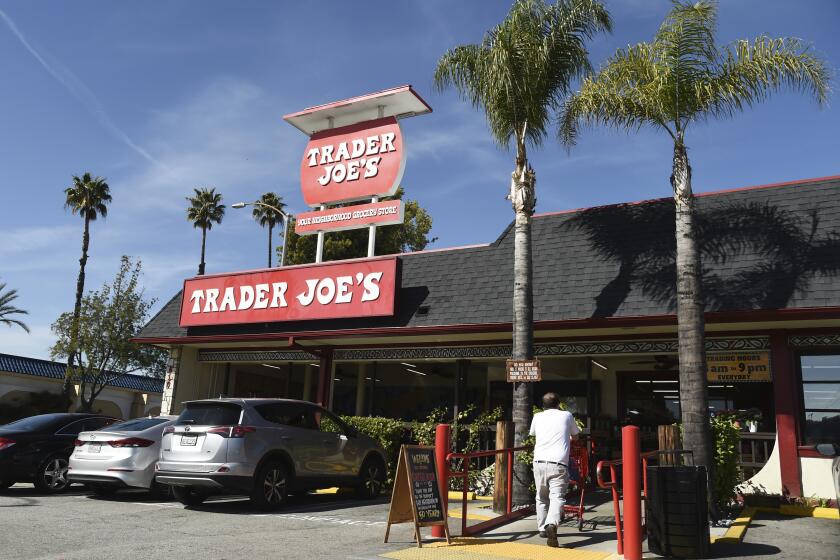Op-Ed: To overcome its housing crisis, California needs YIMBY to become the new NIMBY

My wife and I bought our house, a two-bedroom fixer-upper a couple of miles south of UCLA, in 1978. My dad termed the house “a dump,” and he was shocked at its outrageous price tag of $92,000.
Today our modest bungalow, because of its location, would sell for something approaching $2 million, but we don’t have any desire to move. We love the place, and we love the neighborhood.
For the record:
2:35 p.m. Feb. 6, 2019An earlier version of this story misspelled state Sen. Scott Wiener’s name. It is Wiener, not Weiner.
But we also see the problem with leafy neighborhoods of single-family homes like ours.
My wife and I moved to the area when middle-class people could still afford to live here; today, people like we were back then are denied entrance to the neighborhood because of the high prices. Across Los Angeles, this has become true as the population has swelled and new housing has not kept pace with demand, driving prices ever higher.
YIMBYs have assembled a statewide organization favoring more development, including affordable housing, but only in certain areas along transit corridors.
My neighborhood is exactly the kind of place urban planners think should be part of the solution. With an Expo Line station less than a mile away, it’s near transit, and there is already a huge residential and commercial complex going up adjacent to the station. The nearby Westside Pavilion mall is becoming Google offices, which will locate more jobs in the neighborhood.
Yet much of the area remains zoned only for single-family homes. At a time when housing is so scarce, having vast swaths of Los Angeles off-limits to multi-family homes is difficult to justify. But it’s also understandable that residents don’t want to sacrifice the qualities that drew them to a neighborhood.
I’ve covered housing issues in Los Angeles for decades, and I would like to be part of the solution, but I’d also hate to see the quiet streets of my neighborhood suddenly sprouting four- and five-story apartment houses.
There may be middle ground, but it will require compromise by the NIMBYs – the not-in-my-backyard homeowners who don’t hesitate to exert their influence with City Hall.
One possible way forward is being championed by a new movement of Californians who call themselves YIMBYs (for Yes In My Backyard). They have assembled a statewide organization favoring more development, including affordable housing, but only in certain areas along transit corridors. The California YIMBY movement has liberal roots, with a staff that includes veterans of Barack Obama’s presidential campaigns.
Leading the YIMBY effort legislatively is Democratic state Sen. Scott Weiner, who represents San Francisco, a city hard hit by high housing costs. He has introduced a bill, SB50, that would require cities to incentivize construction of four- to five-story apartment houses within half a mile of transit train stations and within a quarter-mile of heavily used bus lines. A more radical version of the bill was defeated last year, but political currents seem to be shifting and passage may be possible now.
But it won’t be easy. For many decades, cities have resisted such state interference with their local housing and zoning laws, invoking the slogan of “home rule.” And politicians have learned the political perils of crossing homeowners. When residential property taxes soared more than a quarter of a century ago, homeowners revolted and passed tax-limiting Proposition 13, which has hobbled spending on infrastructure and schools ever since.
Still, several California mayors have signed on to supporting SB50, including the influential mayor of Sacramento, Darrell Steinberg, who has said he thinks the state’s housing supply crisis has been exacerbated by keeping zoning decisions at the hyper-local level. Los Angeles Mayor Eric Garcetti tentatively supports the measure as well.
Enter the Fray: First takes on the news of the minute »
By supporting housing growth in areas well-served by transit, YIMBY supporters hope to avoid adding to traffic woes in neighborhoods. And denser housing along transit corridors could help provide additional housing in a city without changing the basic character of many neighborhoods. That hasn’t seemed to matter, though, to some NIMBYs, who continue to oppose development anywhere near their homes.
For those still on the fence, it’s worth considering how some of L.A.’s nicest neighborhoods became what they are today. Restrictive zoning laws were rooted partly in wanting to preserve the residential feel of neighborhoods, but they also have a more sinister history. Non-whites were long prohibited from buying homes in many L.A. neighborhoods, either because of specific written covenants or because of discriminatory real estate and banking practices.
Although racial discrimination in housing has been illegal for decades, its after-effects have lingered. Blacks and Latinos banned from some of the city’s more expensive neighborhoods were forced to purchase homes in areas that often didn’t rise in value as quickly as homes in affluent — and restricted — neighborhoods. And even when laws changed, neighborhoods were slow to change, because a highly segregated neighborhood might not seem like a welcoming place.
Many of today’s neighborhoods zoned strictly for single-family homes are rooted in that past. It’s time for homeowners across the city to open them up, adding housing that will make all parts of the city more economically and ethnically diverse — and make the city work better for all its residents.
Bill Boyarsky is the former city editor of the Los Angeles Times.
More to Read
A cure for the common opinion
Get thought-provoking perspectives with our weekly newsletter.
You may occasionally receive promotional content from the Los Angeles Times.










